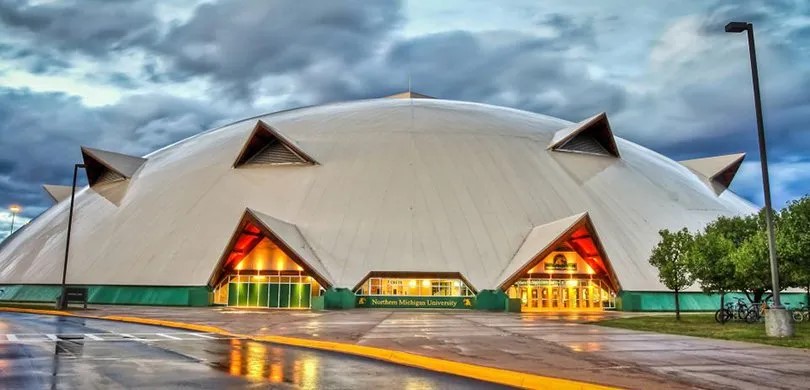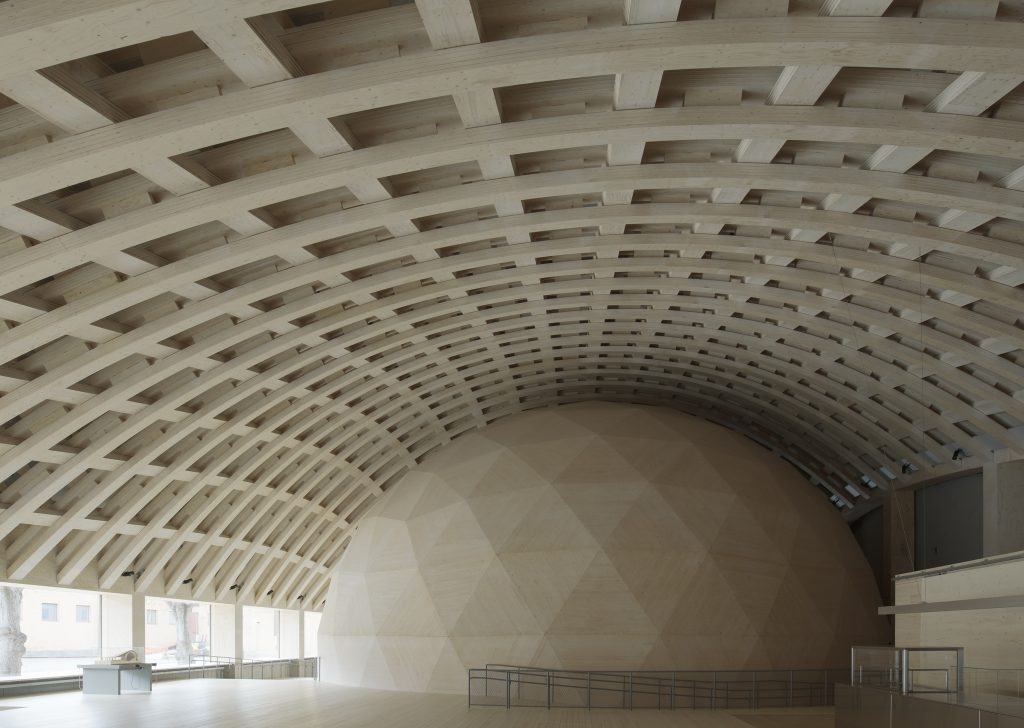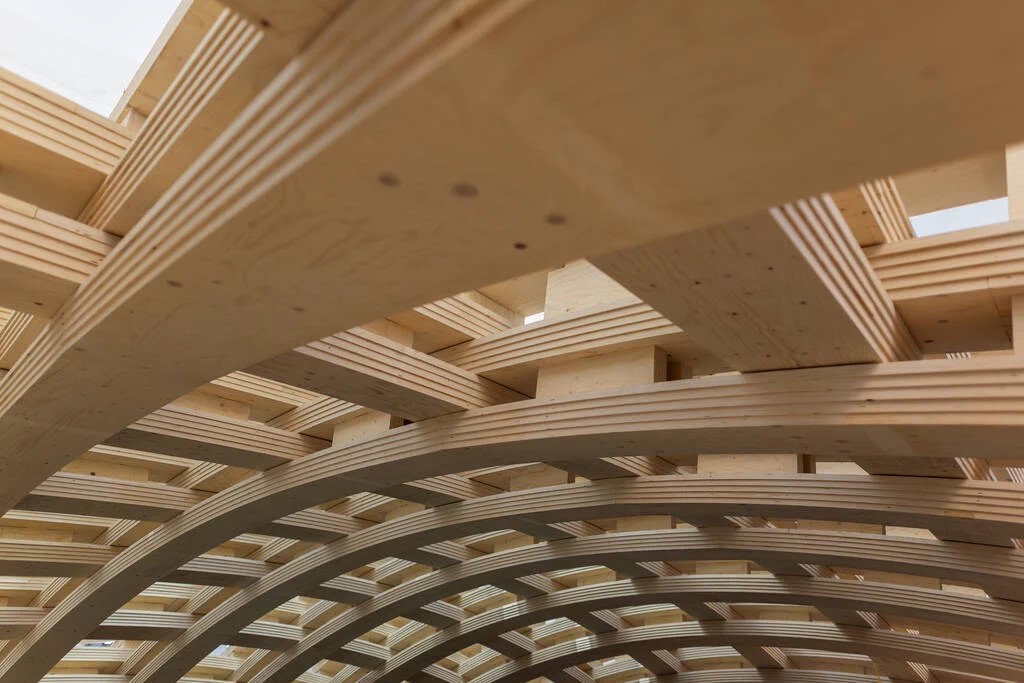The dome has been a staple of architecture for thousands of years. Made of contemporary materials, brick and mortar or wood primarily, domes have covered churches and stadiums around the world. The Hagia Sophia Grand Mosque in Istanbul, Turkey, for example, was the largest brick and mortar dome for almost a thousand years, from its construction in 563 until the completion of the Florence Cathedral in 1436. The Dome of the Rock in Jerusalem was the largest wooden dome for an equal amount of time.
Currently, the Superior Dome, a domed stadium on the campus of NMU (Northern Michigan University) in Marquette, Michigan, is the largest wooden dome at 143 feet tall, a diameter of 536 feet, covering an area of 5.1 acres with a volume of 16,135,907 cubic feet.

The structure is a geodesic dome constructed with 781 Douglas fir beams and 108.5 miles of fir decking, designed to support snow up to 60-lbs. per sq.ft. and withstand 80-mile-per-hour winds. It has a permanent seating capacity of 8,000 people, though the building can hold as many as 16,000 people.

And while the Superior Dome is on the campus of a university, its primary function isn’t education. For an example of a dome for education, look across the Atlantic to Europe and Sweden’s National Museum of Science and Technology in Stockholm. The Wisdome Stockholm building encompasses a wooden architectural design creating an arched-shaped room of 1,325 square meters (14,262 sq.ft).
Wisdome Stockholm is a landmark of wooden architecture according to Stora Enso, the main partner that delivered sustainable wooden construction materials for the project. Wood as a building material is an important part of the battle against climate change, enabling storage of CO2 and a sustainable construction process.

The wood used for both the LVL (laminated veneer lumber) and CLT (cross-laminated timber) building elements for Wisdome Stockholm came from sustainably managed, certified forests in Sweden and Finland and stores in total 1,299 tons of carbon dioxide. The construction incorporates both curved and twisted beams, found in only a few locations worldwide.
Situated at the heart of the exhibition hall is a substantial wooden dome equipped with state-of-the-art visualization technology. The architectural firm Elding Oscarson designed the building to challenge and test the properties of the materials and the construction. The free-form roof has long spans of 26 by 48 meters (85 by 157 feet) to form the grid shell structure made up of five layers of LVL, totaling 20 km (12.4 miles) in 2,500 parts, supplied by Stora Enso, and bent and customized with exact precision. It is joined together with 3,600 wooden dowels. The spherical dome is comprised of 277 unique CLT triangles.
Building with wood brings new opportunities in the form of a reduction in transport, a quieter construction process, and a more pleasant environment. Above all, it is more climate-smart, which is why wooden material has such an important role to play in the development of the sustainable construction industry of the future. Wisdome Stockholm will represent a challenging point of reference that tests the boundaries of possibility for what can be built using wood.

The Wisdome project is based upon a collaboration between Sweden’s five leading science centers—Malmö Museum, Universeum in Gothenburg, Curiosum in Umeå, Tekniska Museet in Stockholm, and Visualiseringscenter C in Norrköping—with Visualiseringscenter C forming the hub of the project. The project also incorporates the involvement of more than ten universities and research facilities working with research, technology, application, and didactics.
In the spherical dome, visitors are completely immersed in high-resolution 3D projections—all the way around and above. Six laser projectors with 8K resolution and an advanced 10.1 sound system combine to create an experience that is so realistic that people will doubt their own senses. With professional explainers at the controls, the galaxy is an open world, based entirely on the latest images from NASA and ESA’s satellites.
The ability to scale up or down and to move around freely through time and space makes it possible to comprehend distances, microscopic dimensions, and processes of events over the course of millions of years or within a millisecond. The technology can be adjusted to tailor the content and experiences to different visitor groups, such as families with children, high school students, adult evening visitors, or corporate events.
Want to tweet about this article? Use hashtags #construction #sustainability #infrastructure


